News & Event


News & Event
News & Event
[The 117th KISTEP Wednesday Forum] What is Important to Overcome Export Regulation on Materials and Components of Japanese Origin?
- Writer Yeory Lim
- Date2019-12-23
- Hit1,271
KISTEP held the Wednesday Forum in the theme of ‘What is Important to Overcome Export Regulation on Materials and Components of Japanese Origin?’ on 18th December (Wed).
Japan initiated export regulations on 3 items of semiconductor·display areas by excluding Korea from White List in last July. This has sparked keen interest in securing core source technologies for material·component·equipment in and outside of S&T industries. The government suggested innovation plans (draft) to strengthen self-reliance capacity of material·component·equipment areas, and clarified that 1.7 trillion won worth of funds, 900 billion won increased compared to last year, will be invested in material·component·equipment areas in 2020. So the forum was prepared to seek plans for S&T and industries to respond Japan’s export regulations on material·component.
Japan initiated export regulations on 3 items of semiconductor·display areas by excluding Korea from White List in last July. This has sparked keen interest in securing core source technologies for material·component·equipment in and outside of S&T industries. The government suggested innovation plans (draft) to strengthen self-reliance capacity of material·component·equipment areas, and clarified that 1.7 trillion won worth of funds, 900 billion won increased compared to last year, will be invested in material·component·equipment areas in 2020. So the forum was prepared to seek plans for S&T and industries to respond Japan’s export regulations on material·component.
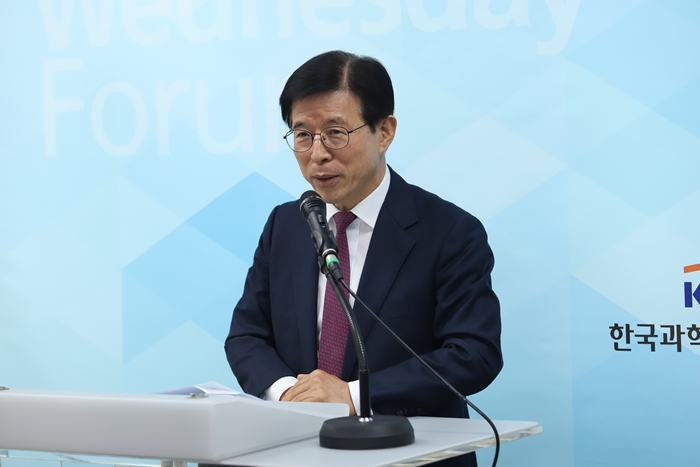
▲ Sang-seon Kim (President, KISTEP)
The forum was began with the opening address by Sang-seon Kim (President, KISTEP), and followed the presentations of Min Sun Kim (Director, Korea National Industrial Convergence Center, Korea Institute of Industrial Technology). Panel discussion with Ceol Woo Park (Professor, Korea Polytechnic University), Chelhong Kim (Director, LG Display), and Young-Hyun Jin (Director, Center for Growth Engine R&D Coordination, KISTEP), and open floor discussion were followed.
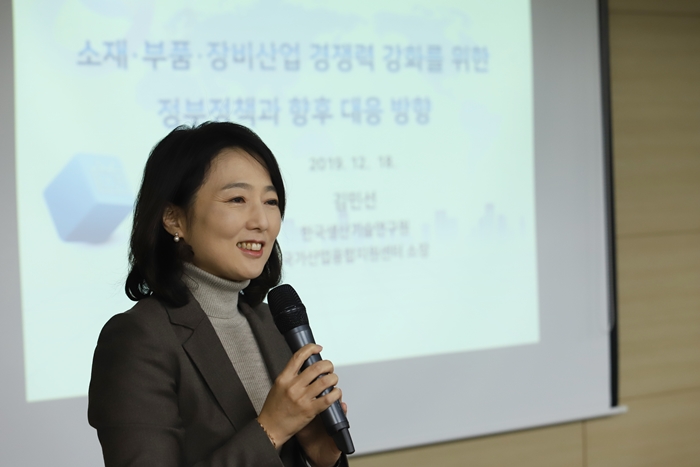
▲ Min Sun Kim (Director, Korea National Industrial Convergence Center, Korea Institute of Industrial Technology)
Director Kim explained that Japan’s export regulations revealed the weak points of the structure of material·component·equipment areas of Korea, and it made the government to act to strengthen the capacity of material·component·equipment areas. As a result, several ministries, besides of MSIT, prepared plans to break foreign-dependent industrial structures, and to leap as a strong power in material·component·equipment areas.
Then she explained R&D strategies and the innovation plans for material·component·equipment areas. After selecting crucial items and analyzing them deeply, the government is trying to intensify the industry capacity by setting up core investment strategies and special committees, and providing institutional supports.
Lastly, she suggested that ▲new industries of future should be generated in other areas besides of material·component·equipment areas, ▲manufacturing processes should be reviewed in the aspect of Value Chain in order for crucial materials not to be omitted in strategic item lists, and ▲check-up is required to create feasible outcomes from plans for strengthening material·component·equipment’s competitiveness.
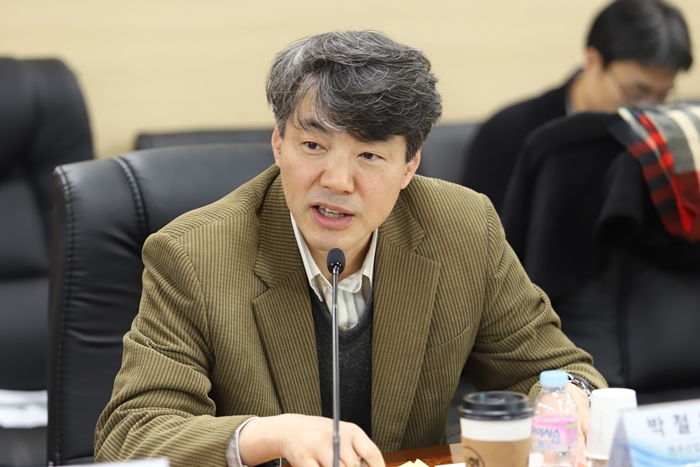
▲ Ceol Woo Park (Professor, Korea Polytechnic University)
In panel discussion, professor Park mentioned that “Ecosystemic approaches are required to preoccupy new industries.” Then he suggested that “We have to make up for what we are technically lacking in the industrial value chain. Counterplan for continuous investments and increasing productivity is required for Korea to participate in the global value chain.”
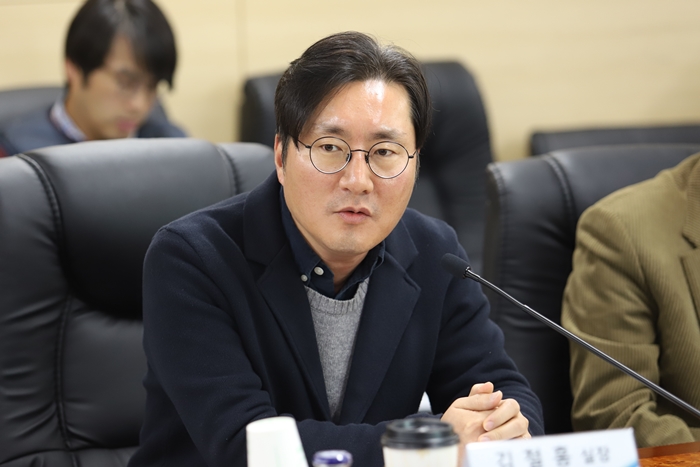
▲ Chelhong Kim (Director, LG Display)
Director Kim clarified opinions on the government’s plan for material·component·equipment areas in the aspect of enterprise.
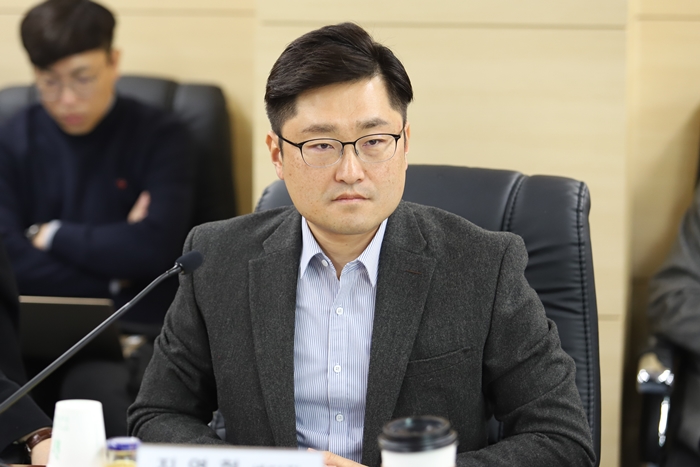
▲ Young-Hyun Jin (Director, Center for Growth Engine R&D Coordination, KISTEP)
Director Jin said that it will be a good opportunity to internalize technologies of material·component·equipment areas saying that “The public are interested in plans for material·component·equipment areas, and it is different because it reflected on-site opinions.” Also he asserted that “Developing an item is important, but gaining specialized human resources and know-how during development processes is more important. Continuous attention is required for enterprises to endure long R&D processes although feasible outcomes are not generated at once.” Lastly, he suggested that “Big enterprises with stable basis should be in the center of R&D for material·component·equipment, and the government should prepare related policies to support this.”
